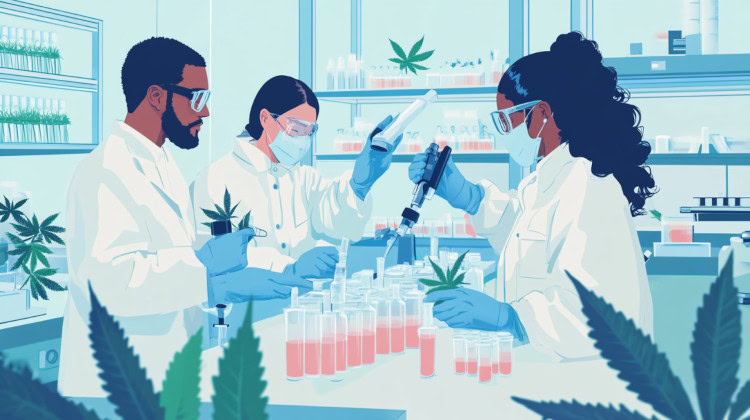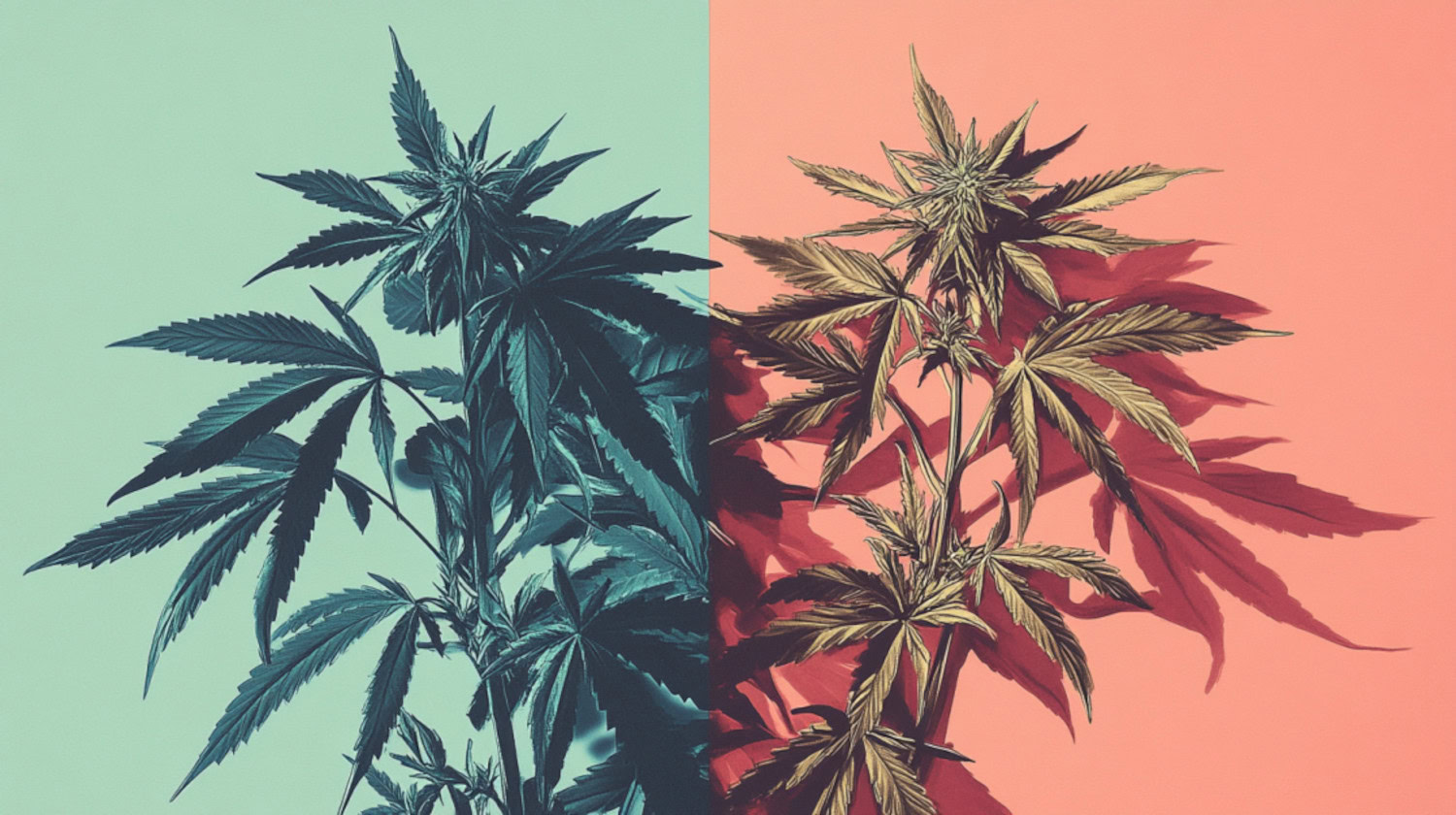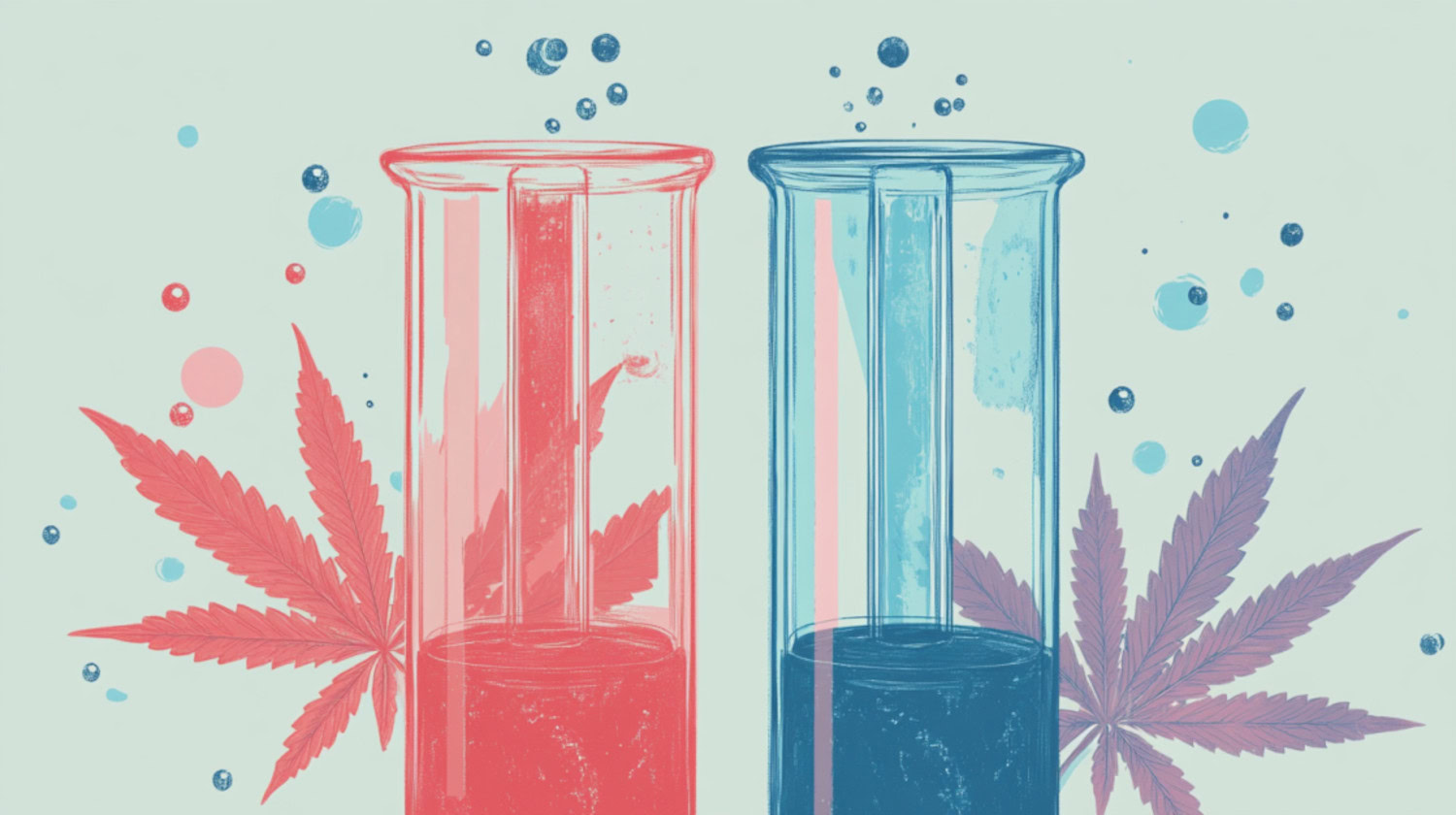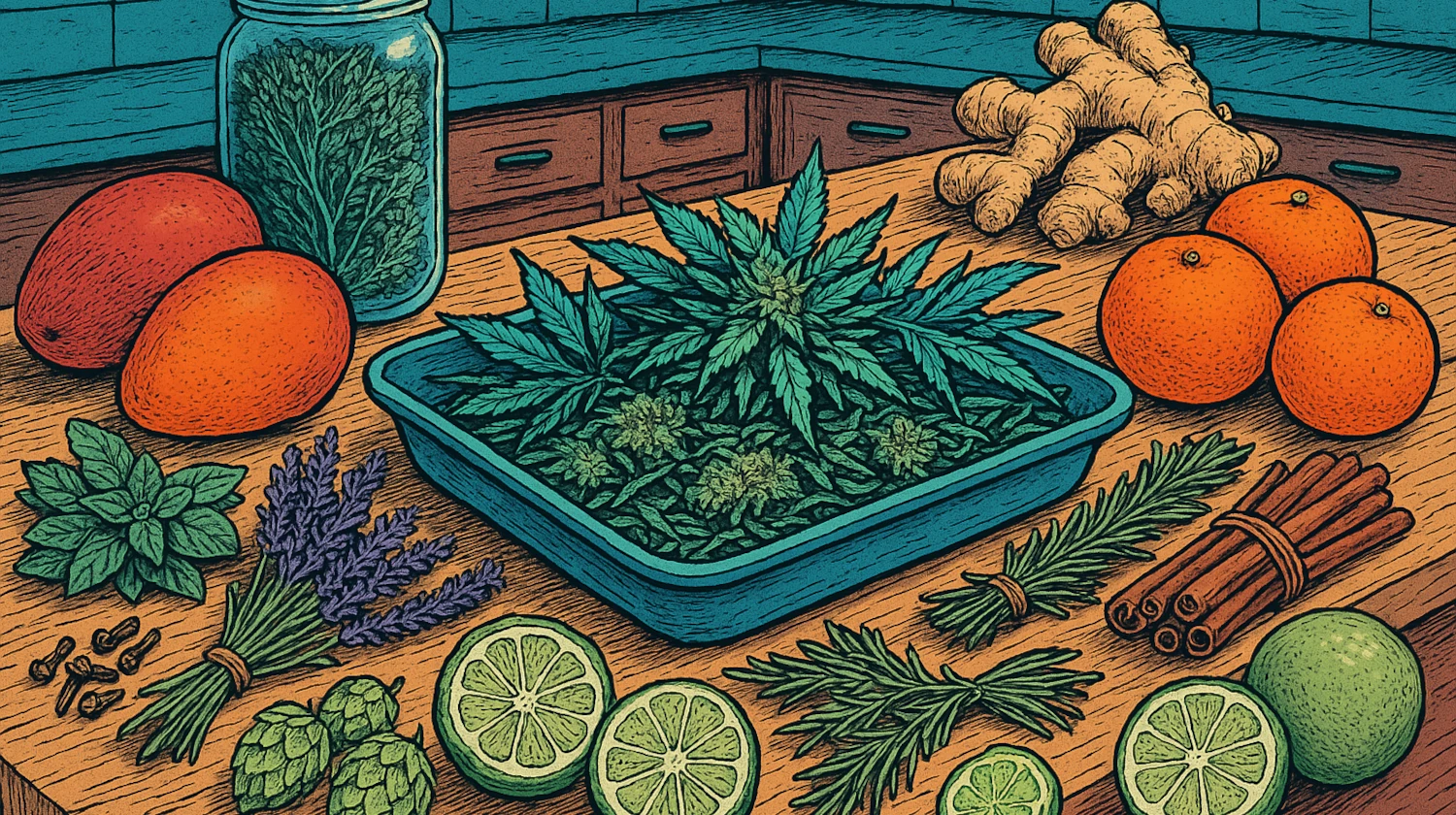In This Article
- Is Higher THC Really Better?
- How Do Terpenes Affect the Cannabis Experience?
- Which Is More Important for Patients?
- How Can Patients Balance Terpenes and THC in Choosing Products?
- Terpenes and THC FAQs
- Which Is Better, High THC or Terpenes?
- Are Terpenes and THC the Same Thing?
- What Do Terpenes Do for Your High?
- How Do Different Terpenes Make You Feel?
- References
Key Takeaways
- High THC doesn’t guarantee a better experience or better relief.
- Terpenes play a starring role in shaping the effects of cannabis.
- Balancing terpenes and THC leads to more personalized and effective treatment.
When comparing cannabis products, it’s tempting to be swayed by the numbers. A cultivar with 30% THC, or a concentrate with close to 80%? Higher THC must be the best, right?
Here’s the twist: THC isn’t the whole story. Terpenes do more than add scent and flavor to your cannabis. More importantly, they affect the body in ways that can affect your cannabis experience. So, the terpenes vs THC debate is actually more nuanced than you may think.
Is Higher THC Really Better?
Many cannabis consumers believe that higher THC automatically equals a better high or more effective relief. However, research suggests otherwise.
Frequent use of high-THC products can rapidly increase tolerance, leading patients to require higher doses over time for the same effects. That extra THC can override a diverse mix of beneficial cannabinoids and terpenes.1
Terpenes are aromatic molecules found naturally in many plants, not just cannabis. They give cultivars unique scent profiles, from citrus and lavender to spicy pepper and earthy pine aromas. But they're not just about aroma. Terpenes may support how cannabis affects your body and mind.
Terpenes vs THC is about balance. Cultivars bred for high-THC often sacrifice a beneficial mix of compounds in favor of high potency. Without those terpenes and other cannabinoids, you might get a strong head or body high, but you’ll miss much of the nuance in a fast-fading high.
So, while THC delivers the intoxicating kick, it’s the mix of terpenes and cannabinoids that keeps the experience smooth and ups the therapeutic potential. Terpenes, not just THC potency, drive many of cannabis’ benefits and effects.2
All the components of full-spectrum cannabis participate in the effect on the body and mind. Flavonoids create the color of the cannabis plant but also provide potential medicinal benefits.3
Along with terpenes, flavonoids can change how THC moves through your body and brain. They affect the blood-brain barrier, a protective layer that controls which substances enter the brain.1
How Do Terpenes Affect the Cannabis Experience?

Terpenes are aromatic compounds that give cannabis its signature smells, like piney, citrusy, or earthy. But the fragrance is only part of the story of terpenes. Terpenes help shape your cannabis experience, influencing mood, relaxation, energy, and pain relief. They influence whether a strain leaves you chill, makes you chatty, creative, or couch-locked.
Studies indicate that pleasant aromas from cannabis flower directly correlate with enhanced mood and subjective enjoyment. It's the aroma, not the THC content, that better predicts a satisfying cannabis experience.4 Terpenes may also influence how THC is absorbed by our bodies, enhancing its therapeutic potential.1
Beta-caryophyllene, for example, is a terpene with a spicy, peppery scent. It interacts with your body’s CB2 receptors (part of the endocannabinoid system) to ease inflammation and stress without intoxication.5 Or limonene, which smells like a bowl of citrus fruit and can lift your mood. Every terpene brings its flavor – figuratively and literally – to your high.
Some studies suggest that terpenes team up with THC and CBD to boost their effects, a phenomenon named the “entourage effect.”2 Others argue that terpenes don’t need THC to create their special effects but work independently.6 Either way, terpenes may help enrich the cannabis experience.
Which Is More Important for Patients?

Terpenes vs THC: which one dominates? It’s not an either/or choice; it’s about what you need. If you’re a patient using cannabis for relief from anxiety, pain, or insomnia, terpenes might be your best focus. THC can alleviate symptoms with intoxicating effects, but terpenes bring the extra support. As THC is working, linalool (a lavender scent) could help you unwind, while pinene might keep your mind energized.3
That said, THC still matters. THC is the main contributor to cannabis’ euphoria and its potent relief. But you want the right cannabis dose for you. The trick is finding the right balance.
A product with high THC but no terpenes might leave you foggy or anxious, while a terpene-rich option may level these effects. For most patients, it’s not about maxing out THC, but getting targeted treatment for the condition.
Your nose may be the best guide when choosing cannabis for therapeutic effects. A 2022 study found that the most significant predictor of a positive cannabis experience wasn’t THC content, dose, or even terpene concentrations–it was whether the patient liked how the cannabis smelled.4
In blind tests with various commercial cultivars, researchers discovered that aroma preference strongly correlates with improved mood and overall enjoyment. At the same time, higher THC levels had no consistent link to positive outcomes. This study reinforces the idea that your body knows what it needs, and a natural attraction to certain terpene scents may play a larger role in therapeutic results than THC percentages alone.
This finding supports the entourage effect theory that terpenes enhance and shape the effects of cannabinoids. Other researchers suppose terpenes may have their own biological activity.6 Either way, while terpenes are only present in relatively small quantities, their ability to tone cannabinoid activity can be significant.
Together, these findings suggest that when choosing cannabis, selecting strains with aromas you naturally enjoy may lead to better therapeutic outcomes.2
How Can Patients Balance Terpenes and THC in Choosing Products?

Ready to shop smarter? Here’s what to look for at the dispensary to get a balance of terpenes and THC.
Flower: Look for buds testing around 2% to 4% terpenes to bring flavor and effects without overwhelming. Keep THC below 30% to avoid increased tolerance and that flat feeling from overdoing it.
Concentrates/Vapes: Stick with products with up to 10% terpenes for a full experience. THC levels under 80% can keep things manageable.
Check the Label: Reputable brands list terpene profiles alongside cannabinoid content and potency. No info? Pass—it’s a red flag.
Newbies might love microdosing with lower-THC options to ease in while still getting terpene benefits.
For medical cannabis patients, terpenes balanced with cannabinoids like THC can significantly affect treatment outcomes.
- For example, a THC cultivar high in beta-caryophyllene may deepen pain relief with its anti-inflammatory properties.
- Strains high in limonene or linalool may reduce stress and improve mood to help with anxiety.
- Insomnia sufferers might benefit from the sedating effects of myrcene with THC at night.
To get the most from your treatment, pair the right cannabinoid with a terpene that supports the way you want to feel.
For instance, if you’re aiming to feel calm and stress-free, look for products with soothing terpenes like linalool or myrcene alongside CBD or low-dose THC.
If you’re seeking focus or energy, a strain with uplifting terpenes like limonene or pinene may be a better match, especially when paired with THC in moderate amounts. By aligning your desired effects with the cannabinoid and terpene content, you can fine-tune your experience and improve the consistency and effectiveness of your treatment outcomes.2
An understanding of the terpene profile of a product can help match cannabis to the condition. Rather than reaching for the highest THC percentage, look for specific terpenes to work together with the cannabinoids toward your treatment outcome goal.
Terpenes and THC FAQs
Which Is Better, High THC or Terpenes?
It depends on your goal. High THC hits hard and fast—great for instant relief or a big buzz. But terpenes bring nuance, making the effects more enjoyable and tailored. Most pros say a mix of both surpasses the highest THC strains every time.
Are Terpenes and THC the Same Thing?
Nope! THC is a cannabinoid and the primary intoxicating element of cannabis. Terpenes are aromatic compounds that shape the flavor and feel of your cannabis.
What Do Terpenes Do for Your High?
Terpenes adjust your high, mixing it to an individual experience. They can mellow out THC’s intensity, boost your mood, or even ease physical tension. A study on cannabis aroma found that a pleasant terpene profile, not just THC, makes the experience more appealing.2,7
How Do Different Terpenes Make You Feel?
Different terpenes have distinct effects. Here’s a quick rundown:
- Myrcene: Earthy and relaxing—perfect for calm and deep relaxation.
- Limonene: Zesty and uplifting—improves mood and energy.
- Pinene: Pine-fresh and sharp—great for clarity and focus.
- Caryophyllene: Spicy and soothing—promotes tranquility and ease.
- Linalool: Floral and calming—ideal for stress relief and restful sleep.
References
- McPartland JM, Russo EB. Cannabis and Cannabis Extracts. Journal of Cannabis Therapeutics. 2001;1(3-4):103-132. doi:https://doi.org/10.1300/j175v01n03_08 ↩︎
- Ferber SG, Namdar D, Hen-Shoval D, et al. The “Entourage Effect”: Terpenes Coupled with Cannabinoids for the Treatment of Mood Disorders and Anxiety Disorders. Current Neuropharmacology. 2020;18(2):87-96. doi:https://doi.org/10.2174/1570159x17666190903103923 ↩︎
- Ullah A, Munir S, Badshah SL, et al. Important Flavonoids and Their Role as a Therapeutic Agent. Molecules. 2020;25(22):5243. doi:https://doi.org/10.3390/molecules25225243 ↩︎
- Plumb J, Demirel S, Sackett JL, Russo EB, Wilson-Poe AR. The Nose Knows: Aroma, but Not THC Mediates the Subjective Effects of Smoked and Vaporized Cannabis Flower. Psychoactives. 2022;1(2):70-86. doi:https://doi.org/10.3390/psychoactives1020008 ↩︎
- Sommano SR, Chittasupho C, Ruksiriwanich W, Jantrawut P. The Cannabis Terpenes. Molecules. 2020;25(24):5792. doi:https://doi.org/10.3390/molecules25245792 ↩︎
- Finlay DB, Sircombe KJ, Nimick M, Jones C, Glass M. Terpenoids From Cannabis Do Not Mediate an Entourage Effect by Acting at Cannabinoid Receptors. Frontiers in Pharmacology. 2020;11. doi:https://doi.org/10.3389/fphar.2020.00359 ↩︎
- Plumb J, Demirel S, Sackett JL, Russo EB, Wilson-Poe AR. The Nose Knows: Aroma, but Not THC Mediates the Subjective Effects of Smoked and Vaporized Cannabis Flower. Psychoactives. 2022;1(2):70-86. doi:https://doi.org/10.3390/psychoactives1020008 ↩︎
The information in this article and any included images or charts are for educational purposes only. This information is neither a substitute for, nor does it replace, professional legal advice or medical advice, diagnosis, or treatment. If you have any concerns or questions about laws, regulations, or your health, you should always consult with an attorney, physician or other licensed professional.




